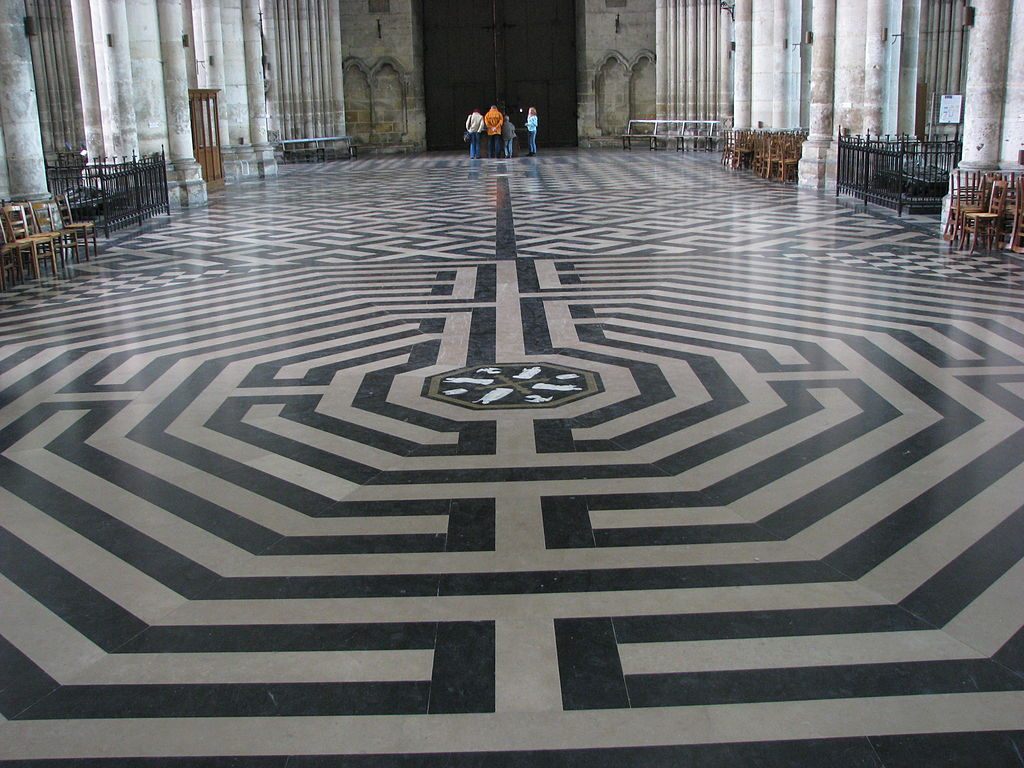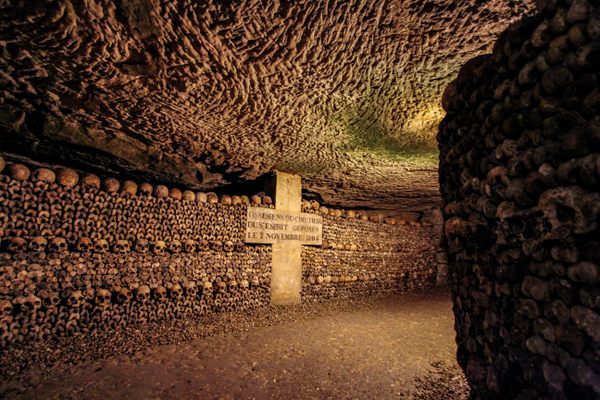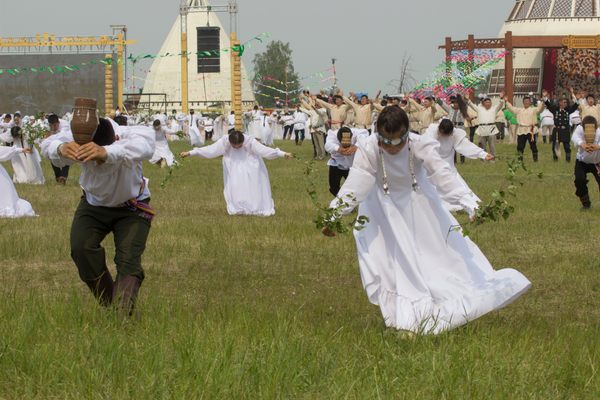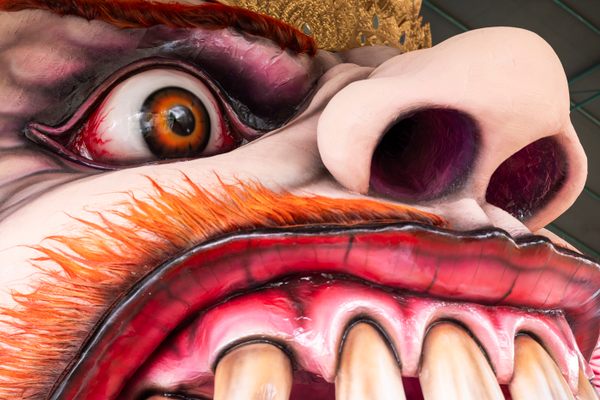The Lost Tradition of Playing Ball in Church to Celebrate Easter
Priests danced around a labyrinth and played a symbolic, ritual game of catch.
In the nave of Chartres Cathedral, the stones of the floor were arranged, hundreds of years ago, to form a flat labyrinth, 42 feet in diameter, with paths large enough for a person to walk its full winding course.
Starting back in the 12th century, labyrinths like this became part of the design of cathedrals in northern France and in Italy. Their purpose is somewhat mysterious, though it’s usually assumed to be allegorical in some way. Following the path of the labyrinth might have symbolically recreated a pilgrimage, or perhaps the symbol represented Christ’s trip through Hell between his crucifixion and resurrection. Sometimes the labyrinths were decorated with images of the Minotaur, from the ancient Greek myth involving the hero Theseus, repurposed to symbolize Christ’s journey.
Thanks to a 14th-century document, though, we know that at least one cathedral labyrinth had another purpose, just once a year—it was used as a ball court on Easter Monday.
In Auxerre Cathedral in northern France, and most likely in cathedrals in Sens and Amiens (and perhaps Chartres, as well), clergy gathered around the labyrinth, danced in a circle, and tossed a ball from person to person. These games, according to medieval religious observers, had ties to pagan practices. In certain places, they were incorporated into church rituals for hundreds of years.
Though it was meant to be joyful, the Easter ball game was far from a free-for-all. One early description, according to Max Harris, author of Sacred Folly: A New History of the Feast of Fools, describes how, before vespers on Easter Monday, the cathedral chapter would gather at the archbishop’s house to eat meat and drink spiced wine. “Afterward the archbishop should throw the ball,” the text specified. A later note added that if the archbishop was absent, his deputy could step in.
During the ritual, the priest who had most recently joined the community would carry the ball, which was supposed to be “too large to be grasped in one man’s hand, requiring two hands to stop it,” to the circle. (The sources don’t say what it was made of.) He would toss the ball to the church’s leader, who would dance with it into the labyrinth. The assembled group would sing the antiphonal hymn “Victimae paschali laudes,” and the organ would keep time.

The priests would start a circle dance, described as “garland-like,” around the labyrinth, while the archbishop or deputy started dancing along the path of the labyrinth. As he proceeded through the winding maze, which took him back and forth around the circumference, and toward the center and out again, he would toss the ball to each of the priests. The game lasted as long as it took the leader to reach the center of the maze.
What was the meaning of this ritual? No one knows for sure, but it referenced some of the big questions in life. What is our place in the world? How do we face down challenges?
The labyrinth’s ring-like paths may have gestured to the organization of the universe, imagined in medieval minds as 12 concentric layers. The dance, writes David Brown, a religious scholar at the University of Durham, “was thus a way of relaying belief in a divine order, no matter how confused our path through life at present appears to be.”

Or, if the dance was meant to recreate the journey of Theseus, the ball could be “one or both of the balls used to defeat the Minotaur,” Harris writes. A ball of pitch, used to stop the monster’s mouth, represents Christ’s humanity, while the ball of thread that Theseus unwound to navigate the maze represents Christ’s divinity. Another tradition gave the ball a simpler meaning: the rising sun on Easter morning.
Whatever its purpose, the ball game tradition was limited to northern France, and eventually those pagan overtones caught up with it. Late in the 15th century, the newest priest at Auxerre was not a fan, and did not bring the ball with him when he was supposed to. He was eventually convinced to play, but that began the end of the tradition. Even the stone labyrinths began to disappear. The one in the Auxerre Cathedral was removed before 1690, along with what scholar Tessa Morrison of the University of Newcastle in Australia calls one “path of pilgrimage of the soul to receive the illumination of God.”




















Follow us on Twitter to get the latest on the world's hidden wonders.
Like us on Facebook to get the latest on the world's hidden wonders.
Follow us on Twitter Like us on Facebook